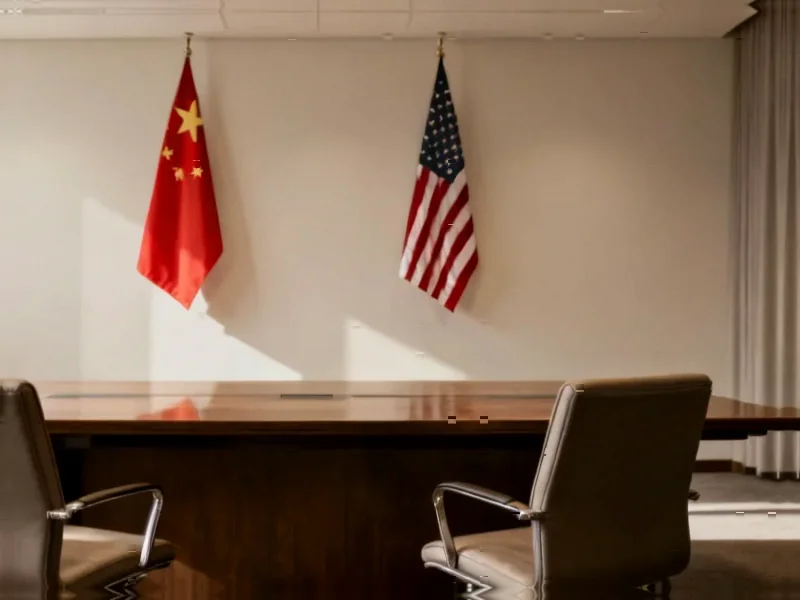According to Forbes, the Supreme Court is hearing oral arguments this week in two landmark cases challenging President Trump’s assertion of unlimited authority to impose tariffs without congressional consent. The cases center on Trump’s use of the International Emergency Economic Powers Act of 1977 (IEEPA) to impose broad tariffs targeting China, Mexico, Canada, and nearly every country worldwide, despite the Constitution granting Congress exclusive power over taxes and tariffs. The administration argues IEEPA grants authority to address “any unusual or extraordinary threat” declared by the president, while challengers note the law never mentions “tariff” and hasn’t been used for import duties in its half-century history. With Tax Policy Center estimates projecting Trump’s tariffs would raise taxes by $2.5 trillion over the next decade and cost households $2,600 annually, the Court’s decision within months could fundamentally reshape presidential power and tax policy. This constitutional confrontation raises profound questions about the balance of powers in American governance.
The Constitutional Framework at Stake
The core constitutional issue extends far beyond tariffs themselves. Article I’s clear assignment of taxing authority to Congress represents one of the foundational checks and balances that distinguishes American democracy from systems with stronger executive authority. What makes this case particularly significant is that IEEPA was designed as a tool for economic sanctions against foreign adversaries during genuine emergencies, not as a mechanism for restructuring domestic tax policy. The petition from Learning Resources, Inc. correctly identifies that no section in Title 19 of the U.S. Code governing customs duties authorizes this use of presidential power. If the Court endorses this interpretation of IEEPA, it would effectively create a permanent emergency taxation power available to any president regardless of the actual nature of any threat.
The Economic Reality Behind Tariff Rhetoric
While political rhetoric often frames tariffs as taxes on foreign countries, the economic reality is starkly different. The Pricing Lab tariff tracker data showing retail prices increasing 4.9 percentage points relative to pre-tariff trends reveals how quickly these costs permeate the economy. What’s particularly concerning is the compounding effect on small and medium-sized businesses that lack the purchasing power and supply chain flexibility of larger corporations. These businesses face an impossible choice: absorb the costs and risk profitability, or pass them to consumers and risk market share. The Goldman Sachs analysis showing US businesses bearing 51% of tariff costs demonstrates how these policies function as a regressive business tax that disproportionately burdens companies with thinner margins and less international leverage.
Congressional Abdication and Institutional Erosion
Perhaps the most troubling aspect of this constitutional crisis is Congress’s unwillingness to reassert its clearly defined authority. The legislative branch has effectively become a spectator in one of its core constitutional responsibilities. This institutional timidity didn’t begin with Trump—we’ve seen a gradual erosion of congressional war powers and spending authority across multiple administrations. However, the tariff power represents one of the most explicit constitutional assignments that Congress is failing to defend. The Congressional Budget Office projections showing tariffs contributing only about 6% of federal taxes highlight how relatively minor this revenue stream is compared to the constitutional principle at stake. This case represents a critical inflection point where the Court may need to enforce constitutional boundaries that the political branches have abandoned.
Dangerous Global Precedents
The international implications of this case extend beyond immediate trade relationships. If the Supreme Court endorses this expansive interpretation of emergency powers, it sets a precedent that could be exploited by future administrations for purposes far beyond tariffs. The episode involving Canadian tariffs triggered by a television ad demonstrates how easily “national emergency” declarations could become disconnected from genuine threats. This creates uncertainty for international trading partners who can no longer rely on established legal frameworks and instead must navigate the personal reactions of individual presidents. The resulting volatility undermines America’s reputation as a stable trading partner and could accelerate the fragmentation of global supply chains that have taken decades to develop.
Broader Implications for Presidential Power
This case represents the latest battle in the ongoing expansion of executive authority that has accelerated across multiple administrations. The specific legal question about tariffs masks a much larger constitutional question about the limits of emergency powers. If a president can declare virtually any economic condition a “national emergency” warranting unilateral tax increases, what remains of Congress’s power of the purse? The emerging pattern of job losses related to tariff impacts shows how these executive actions create economic consequences that Congress cannot effectively check or balance. The Court’s decision will either reinforce constitutional boundaries that have been steadily eroding or accelerate the transformation of the presidency into a more powerful, less constrained institution.
The Real Stakeholders: American Consumers and Businesses
Beyond the constitutional questions, the human and economic impact of these tariffs deserves greater attention. The $2,600 average household cost represents a significant burden, particularly for lower-income families who spend a larger percentage of their income on imported goods and components. The regressive nature of tariff costs means they function as a hidden sales tax that hits most heavily those least able to bear it. Meanwhile, businesses face not just the direct tariff costs but the administrative burden of navigating constantly changing trade policies. The uncertainty created by this executive approach to trade policy may ultimately prove more damaging than the tariffs themselves, as businesses hesitate to make long-term investments in supply chains that could be upended by the next presidential declaration.
The Supreme Court’s decision in these cases will resonate far beyond trade policy, potentially resetting the balance of power between branches of government for generations to come.




